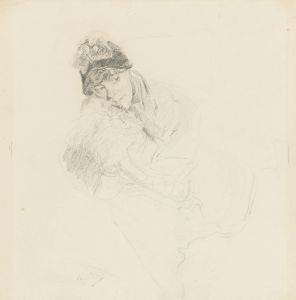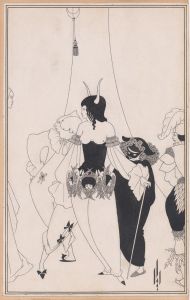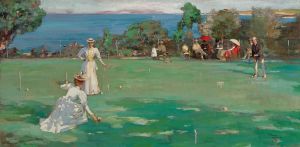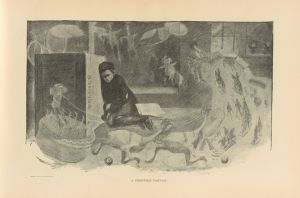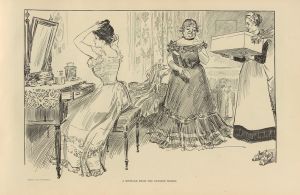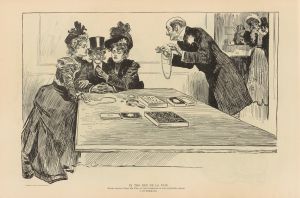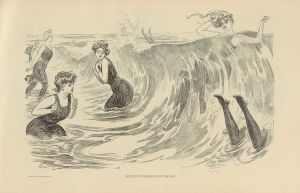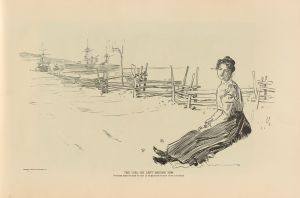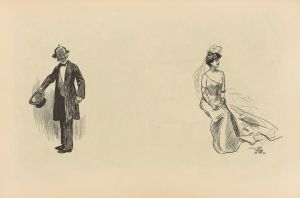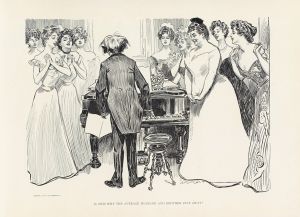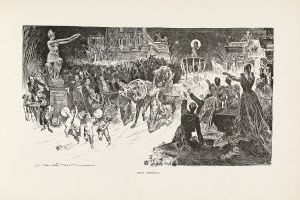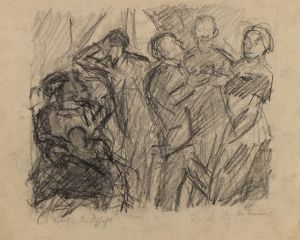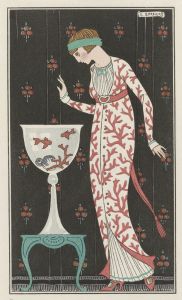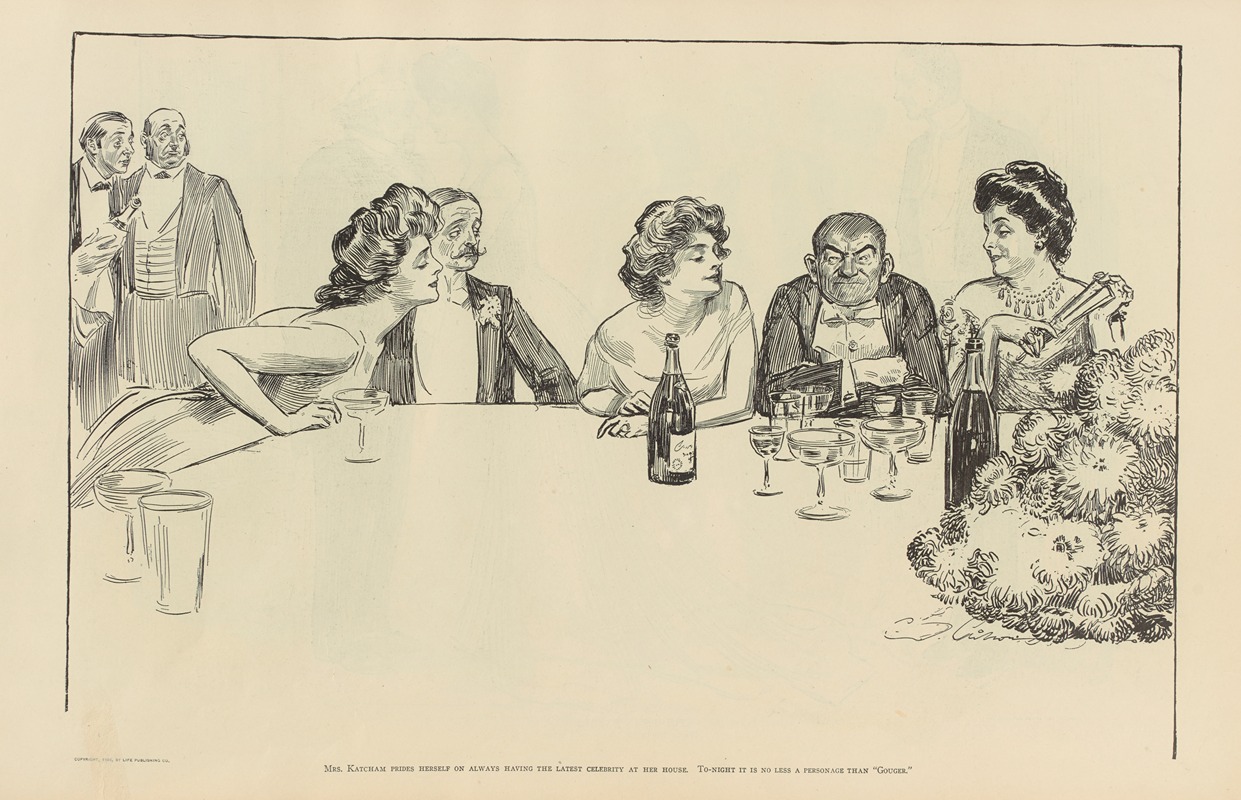
Mrs. Katcham prides herself on always having the latest celebrity at her house
A hand-painted replica of Charles Dana Gibson’s masterpiece Mrs. Katcham prides herself on always having the latest celebrity at her house, meticulously crafted by professional artists to capture the true essence of the original. Each piece is created with museum-quality canvas and rare mineral pigments, carefully painted by experienced artists with delicate brushstrokes and rich, layered colors to perfectly recreate the texture of the original artwork. Unlike machine-printed reproductions, this hand-painted version brings the painting to life, infused with the artist’s emotions and skill in every stroke. Whether for personal collection or home decoration, it instantly elevates the artistic atmosphere of any space.
Charles Dana Gibson was an influential American illustrator best known for his creation of the "Gibson Girl," a representation of the idealized American woman at the turn of the 20th century. His work was widely published in magazines such as Life, Scribner's, and Harper's, and he became one of the most celebrated illustrators of his time. Among his many illustrations, "Mrs. Katcham Prides Herself on Always Having the Latest Celebrity at Her House" stands out as a notable example of his social commentary through art.
This particular illustration was published in the early 20th century, a period characterized by rapid social change and the rise of celebrity culture. Gibson's work often reflected and critiqued the societal norms and behaviors of his era, and this piece is no exception. The illustration depicts a social scene in which Mrs. Katcham, a fictional character, is shown entertaining a celebrity at her home. The scene is likely set in an opulent parlor, typical of the upper-class homes of the time, with Mrs. Katcham surrounded by guests who are keenly interested in the celebrity's presence.
Gibson's illustration captures the essence of the social dynamics of the time, where having a celebrity in one's home was a status symbol and a way to gain social prestige. The artwork subtly critiques the superficial nature of such gatherings, highlighting the societal obsession with fame and the desire to be associated with well-known figures. This theme resonates with the broader cultural shifts of the era, as the media began to play a more significant role in shaping public perceptions and creating celebrity personas.
The style of the illustration is typical of Gibson's work, characterized by detailed line drawings and a keen eye for capturing expressions and social interactions. His ability to convey complex social commentary through simple yet elegant illustrations made his work both popular and influential. The "Gibson Girl" aesthetic, which often featured in his illustrations, represented a new ideal of femininity—independent, confident, and socially active. While "Mrs. Katcham Prides Herself on Always Having the Latest Celebrity at Her House" does not specifically focus on the Gibson Girl, it shares the same attention to detail and social nuance.
Gibson's work, including this illustration, played a significant role in shaping American visual culture in the early 20th century. His illustrations not only entertained but also provided a mirror to society, reflecting its values, aspirations, and contradictions. Today, his work is studied for its artistic merit and its insight into the cultural history of the United States during a time of significant transformation.





